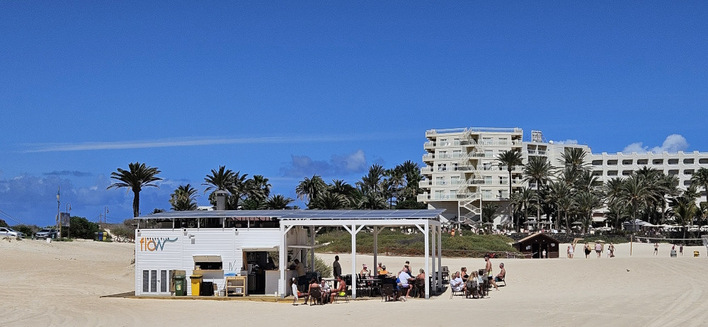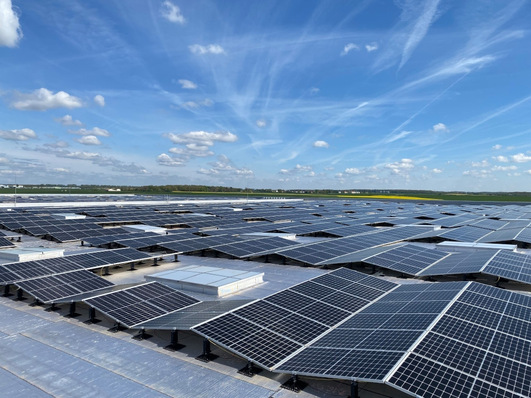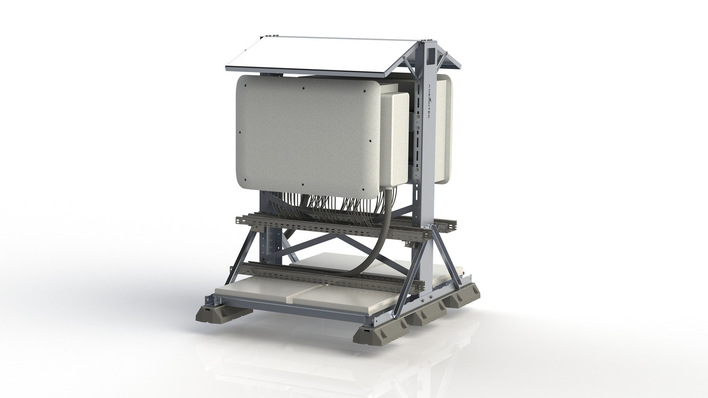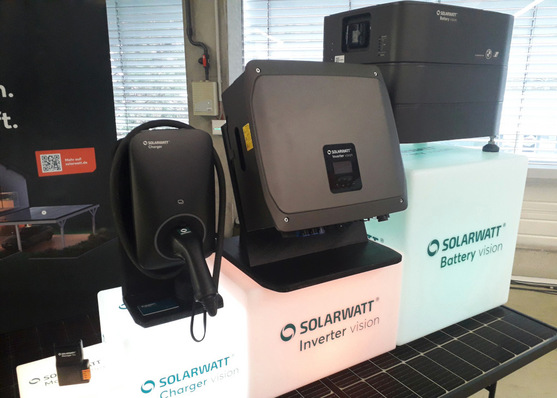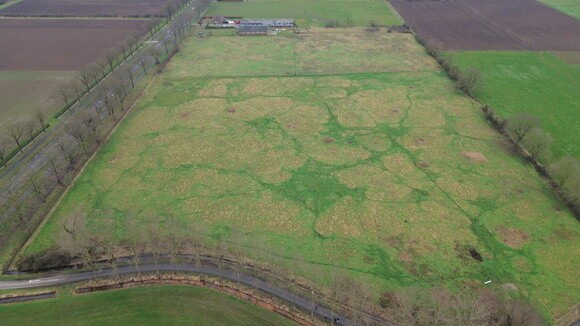Schletter is one of the companies with which the photovoltaics industry has grown. Now we are on the verge of a new phase of growth. Are you prepared for it?
Tom Graf: It is well-known that we are going through a restructuring process, and it is not yet completed. We had to streamline the company, but are now much more effective and efficient. On the base of this, we are in the position to grow with the market at any time, which is what we are already doing again. In the restructuring process, we have particularly professionalised internal processes and formed a management team in charge of quality, production and procurement. And we have restructured our sales.
What does that mean?
Tom Graf: Schletter GmbH, as based in Kirchdorf in Upper Bavaria, serves the markets in Europe, the Middle East, Africa and Iran. We supply Asia and Australia from our plant in Shanghai. America is supplied from our US base. These three factories or locations form the core of the Schletter Group.
These markets – Europe, Asia, America – are very diverse. Are there similarities?
Tom Graf: Price pressure is very strong in all markets. Prices have been falling for years and will continue to do so for a while. That is why we must become more and more industrialised. We need an organisation that wastes as little as possible. It's all about the ideal mix of buying in and in-house production. The automotive industry is a good example of this.
What has changed most in the past ten years?
Tom Graf: The era of feed-in tariffs is coming to an end. We want to offer our customers assembly racks that allow them to economically operate photovoltaic installations without political support.
Cedrik Zapfe: The mounting system accounts for between 15 and 20 percent of the investment costs for an installation. Falling prices have naturally resulted in pressure on us as well.
Tom Graf: Price pressure and the slump in the German market have led to a painful streamlining of the industry. We have managed to turn the corner – with the help of the banks and due to a rigorous restructuring programme.
How many jobs have you had to cut?
Tom Graf: Here in Kirchdorf we have had to reduce from 700 to 300, and we have not quite reached our target. At the same time, we were able to expand our plants in Shanghai and Shelby in North Carolina, so that the total number of Group employees has remained more or less unchanged at 1,300.
Cedrik Zapfe: We have not relocated production from Kirchdorf to China or the US, but we are increasingly producing in the target markets. This is a significant change because the markets in Asia and America have developed very strongly.
Manuel Schwarzmaier: It is worth mentioning that the business has become more sales-oriented. Schletter has always had and still has technically very good products. In view of the consolidation, it is much more important today to bring these products to customers via a professional distribution, in all markets.
Which markets are particularly promising?
Cedrik Zapfe: In Europe that is mostly Scandinavia. The US market is also very strong. Demand in Australia has also been growing rapidly in recent times. We have just won a large 100 megawatt project there.
Tom Graf: The entire Pacific region is growing rapidly, including Japan. It no longer makes sense for us to supply these regions from Europe. The goods would be at sea for months, no one is willing to wait so long. The entire Pacific region is supplied from our plant in Shanghai, where we have a delivery time of only two to three weeks, even for large projects. In the US, we have just introduced a new rack system for greenfield installations. Of course, this is produced in Shelby.
Where are the technological developments in mounting systems heading?
Cedrik Zapfe: The drivers have always been the same: load capacity, user-friendliness and costs. And even though as a developer you may think that any new product is the decisive game changer, there is always room for improvement, both in roof systems or for greenfield applications. One issue is, for example, fracture-resistant materials. They reduce the weight because the racks can carry greater loads. Or we use steel instead of aluminium for certain applications to reduce costs. In the case of steel, it is primarily zinc plating that is expensive. There are duplex coatings made of zinc and epoxy resin. You have to keep an eye on the new developments on the market.
Tom Graf: In addition to the ongoing development of technology and materials, customer requirements are of course also an important driver. In certain markets, for example, we will soon be introducing new products for tracking systems. In Europe, trackers play no role at all, but there is strong demand in the Middle East, the US and Australia. We have to provide this to our customers.
What other benefits can you offer your customers? Have the rack systems not long since been fully utilised?
Cedrik Zapfe: No, there is still a lot of room for improvement. Take the onsite handling. If the assembly of the panels on the building site becomes easier, that reduces the assembly time, which is also a cost factor. We need simpler, standardised systems. Let me give you an example: In the past, we at Schletter had around 140 different clamps for framed roof-mounted or greenfield solar panels. We have reduced this large number to ten clamps that do the same.
How much room for manoeuvre is there at all in terms of the costs of the racks?
Cedrik Zapfe: There will not be any more major progress, but between three and five percent price reductions are still possible. However, the requirements placed on mounting systems will also tend to increase in the future. Recent hurricanes in the US and the Caribbean have shown that wind loads are increasing. For this reason, the standard requirements placed on racks could also increase, which would make it more difficult to reduce costs.
Tom Graf: The development of innovative and improved products is our top priority. At Schletter, we have around 60 developers all over the world to design new products and optimise production. They work on a shared software platform that we have developed for Schletter.
Cedrik Zapfe: With this software, we are able to quickly and efficiently plan stable systems in all markets. This software is constantly maintained and improved.
Tom Graf: Meaningful standardisation is also an integral part of a modern company that wishes to supply its customers quickly and cost-effectively. For years, we have been manufacturing customized solutions for our customers, with delivery times of four to eight weeks. Today we use pre-assembled kits that we deliver to our customers within 48 hours. The goal is to enable our customers to decide which prefabricated roof systems they want to order two to three days before construction starts. Alugrid or Fixgrid will even be available within 24 hours. This is of great benefit to the customers.
So fewer products for more customers and markets?
Cedrik Zapfe: Exactly. And without reducing our range of solutions! We are currently experiencing the greatest transformation in Schletter's product range since I joined the company in 2005. It is about reducing complexity for our customers and for us. Both benefit from this.
What is your final result for the current fiscal year?
Tom Graf: As a group, we will achieve sales of just under 300 million euros in 2017. Business is still slow in Europe. Roof systems dominate here. In America and Asia, the markets tend to be driven by projects. Generally speaking, we are on a very good track. We will start to reap the full benefits of the restructuring in 2018, and then fully in 2019.
How much turnover do you generate through dealers, how much from direct sales?
Manuel Schwarzmaier: In Europe, we generate high revenues in the small-scale roof-top segment. We are listed with all major wholesalers and are also developing a joint warehousing system for roof systems. We already generate just over half of our turnover through wholesalers, with an upward trend. Deliveries to EPCs, project planners and large-scale installing companies are handled directly by Schletter. This segment is becoming increasingly important.
Why is it growing?
Manuel Schwarzmaier: For instance, the EEG’s 750-kilowatt regulation, is beginning to have an effect. Many commercial installations in Germany are designed at just under 750 kilowatts, and larger projects are put out to tender. In general, business up to 40 kilowatts has increased. For medium-sized installations between 40 and 100 kilowatts it has decreased, but larger PV installations of up to 750 kilowatts and beyond are becoming more important. Pitched roof dominates, flat roof is constantly evolving.
If you look back ten years, what stands out particularly?
Manuel Schwarzmaier: Ten years ago, those were wild times. At that time, we doubled our turnover every year, there were an infinite number of enquiries and we spent a lot of time with the customers. Whenever new markets opened up somewhere, we were the first ones there. But after 2012, with 7.9 gigawatts of additional capacity, the tide went out again – just as fast.
Tom Graf: At that time, prices receded dramatically, but so did capacity additions. That did in many in the industry.
Cedrik Zapfe: For me, internationalisation was a very important development. We had the right instinct. It was back then that we developed the software that has made us successful today. In fact, we have been in a constant state of change for the past ten years. We always had to remedy deficiencies and buy in materials in order to meet the high demand. Then we had to learn how to successfully run our business at a slower pace.
Tom Graf: Now markets are going to grow normally, there will no longer be this permanent mood of get-up-and-go. Parts of the business will return to normal, just like in other industries. But, of course, we will continue to look for new horizons, open up and develop new markets. Even if prices continue to fall: Markets will no longer be shrinking.
The interview was conducted by Heiko Schwarzburger.
Read more about Schletter:
http://www.pveurope.eu/Products/Solar-Generator/Mounting/Schletter-offers-new-module-clamp-family
Get to know more about solar modules.
Stay informed, get our newsletter twice a week.
Register here: https://www.pveurope.eu/newsletter



